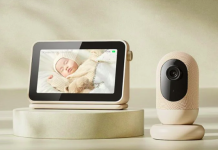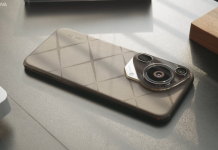Over the past few years, EU has been at the forefront of sustainable and eco-friendly policies for consumer products.
Yesterday, the EU parliament officially passed the “right to repair“ directive, which aims to increase a product’s lifecycle. This would warrant a number of changes in how consumer products like smartphones are serviced and repaired throughout its life.

Here’s what you need to know about the “right to repair“ directive in 5 points.
The rules will take effect after approval by the Council and publication in the EU Official Journal, with EU members having two years to adopt them as law.
- Extended Warranty After Repairs: The right-to-repair rules state that manufacturers should extend a product’s warranty by one year if it is repaired while still under the initial warranty.
- Mandatory Repairs and Reasonable Prices: Even after the warranty expires, companies must repair common household products at a “reasonable” price to encourage repairs over replacements. This includes products like smartphones, TVs, washing machines, and vacuum cleaners.
- Availability of Parts and Tools: Manufacturers are required to provide spare parts and tools necessary for repairs. They are also prohibited from using contractual clauses or techniques that obstruct repairs.
- Third-Party Repairs and Parts: The rules prevent manufacturers from blocking the use of 3D-printed or second-hand parts by independent repair shops. They cannot refuse repairs due to economic reasons or previous repairs by third parties.
- Local Repair Shop Finder: An online platform will be launched to help customers find local repair shops, sellers of used products, and buyers for defective items.

OnePlus has a new fancy Watch 2 Edition in the UK and the EU. The edition, known as the OnePlus Watch 2 Nordic Blue, draws inspiration from Scandinavian design and is the only one with a blue chronograph bezel.
It features a light grey casing with a blue leather band with white stitching. Personally, I think this edition looks quite classy, but the real question is whether it’s worth the €50 premium over the regular edition.
More photos and details in our story here.

Heard of the Swedish EV brand Polestar? They have launched a new smartphone!
Geely Holdings is in the process of taking Polestar’s ownership from Volvo in 2024. Polestar has been struggling lately, and Volvo reportedly wants to hand over its responsibility to its parent company (yes, Geely owns Volvo too), which could help revive the brand.
Well, Geely’s first line of action seems to be releasing a Polestar branded smartphone in the Chinese market.
Yesterday, Polestar announced its first smartphone, called simply the Polestar Phone. This device is basically a clone of the Meizu 21 Pro. If you remember, Geely took over majority ownership of Meizu back in 2022, so this clearly was part of its long term plan.
While the specs are exactly the same as the Meizu 21 Pro, the biggest difference on the Polestar Phone is in the UI. It runs on the Polestar Phone OS, which is essentially a customized version of Flyme OS, featuring design elements similar to those found in Polestar electric vehicles’ interfaces.
The phone has AI features such as image search, image production, and text summarization. It also includes the Polestar Link software, which allows customers to control and monitor their Polestar electric vehicles. This is especially useful in China, where Apple CarPlay and Android Auto are not available.
More details on the Polestar Phone here.
⚠️ DEAL ALERT: Pixel 7 Pro retails for an exciting price of $530; Moto Razr+ available for $699

Despite increased US restrictions on the export of advanced Nvidia AI chips to China, ten Chinese entities with government affiliations were able to obtain these AI chips embedded in server products from major suppliers such as Super Micro Computer Inc., Dell Technologies Inc., and Gigabyte Technology.
Nvidia has stated that the products specified in the tenders were exported and available before the restrictions were imposed, asserting that the purchases don’t indicate violations of export control rules. However, experts suggest that chips could have been diverted to China without the manufacturers’ knowledge due to limited visibility into downstream supply chains.
More details on this story here.
🔥 More Headlines Worth Reading!
Redmi Pad SE with 11″ LCD display, Snapdragon 680 processor & an affordable price tag launched in India
Redmi has just launched a new affordable tablet in the Indian market called the Redmi Pad SE. This new tablet is the successor of the Redmi Pad, which launched back in October 2022.
More details can be found in our launch story here.
If you are wondering whether the Redmi Pad SE is better than the regular Pad – here’s what we think.
Canon’s new VR headset brings live concerts to your living room
Canon is breaking new ground in the realm of virtual reality with the development of a hybrid display VR headset designed to revolutionize music experiences. This new technology will transport users who are sitting in their living room, into the heart of live concert halls, redefining the way we enjoy live performances.
More details are here.
Apple acquires Paris based AI startup Datakalab, likely for on-device model for iPhone 16
Apple is reportedly taking a different approach to generative AI. While the generative AI features on devices are currently backed by server-side large language models, Apple wants to run LLMs on-devices. It will help them ensure user privacy since user data does not have to leave the iPhones and reach servers, that can be shared.
However, there’s only so much that can be done with on-device models. Apple needs to develop a decently capable yet power-efficient model. But doing so on their own will require time. And this is exactly where the acquisition of French startup Datakalab becomes relevant.
More details here!
Xiaomi CEO aims to sell more than 100,000 Xiaomi SU7 cars by 2024
Xiaomi Auto began the delivery of its highly anticipated electric car, the SU7 earlier this month. The delivery ceremony was held at the Xiaomi Automobile Factory in Yizhuang, Beijing, where Xiaomi’s founder and CEO Lei Jun opened the doors of each SU7 car and handed them over to their owners. The company planned to sell only 5000 units globally in the first batch.
But the company’s most recent sales target sounds quite ambitious.
Xiaomi Smart Band 9: What you need to know about the next-gen wearable
The Xiaomi Smart Band 9 is expected to be the company’s next gen wearable product. The Chinese tech giant unveiled the Smart Band 8 back in 2023, and it appears that its successor is set to launch soon. We have covered the upcoming smart band recently, so here’s what to expect from the Xiaomi Smart Band 9.
🗞️ Other Stories in Tech
- Redmi Buds 5A With 25dB ANC, Google Fast Pair Launched In India
- iQOO Quest Days bring maximum savings on iQOO 12 5G, Z9 5G, Neo 9 Pro, Z7 Pro 5G, and others
- OnePlus Pad Go finally arrives in Europe & UK with a 10% discount







